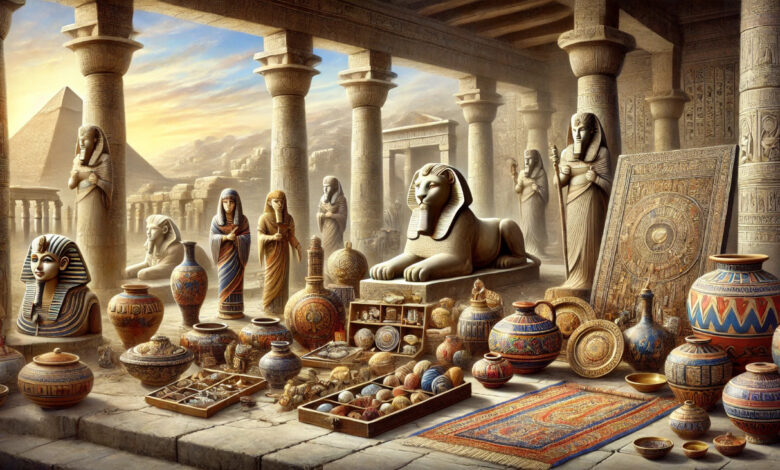
The history of Ancient Artz takes us back to the earliest civilizations of Mesopotamia, Egypt, Greece, and Rome. Back in the day, Art played an important role in these growing societies by providing a means to enforce religious and political order. Every ancient artz represents their culture, their gods, or their rulers. Moreover, Humans in the prehistoric age made art as well which can be around 40,000 years ago, but ancient artz with its techniques, forms, and subject matter laid the foundation of art history.
The Emergence of Ancient Artz
Let’s deep dive into how the Ancient Artz emerged into our lives
- Paleolithic age
The Paleolithic period, commonly known as the Old Stone Age is the earliest known ancient art. The Paleolithic age starts from 30,000 BC During this time, humans created cave paintings and rock art, representing animals, and everyday life. These artworks were commonly found in Europe and Africa and were made using natural pigments and simple tools.
- Egyptian Ancient artz
The Egyptian age starts from 3000 BC. The Egyptians took art to new heights by combining it with their writing system. Hieroglyphics were not just letters or words but intricate symbols representing gods, animals, and life in Egypt. Every stroke told a story, turning their language into an art form itself.
- Ancient Mesopotamian art
Mesopotamia, often referred to as the “Cradle of Civilization,” is home to some of the earliest examples of structured society and this era starts from 2600 BC. They produced magnificent architecture, such as ziggurats and palaces, as well as intricate cylinder seals and relief sculptures. The power of elites, religious rituals, and mythological scenes were represented in the Mesopotamian art.
- Greek art
Greek art ( 800 BC) is known for its sculptures, architecture, and pottery. They are also famous for creating life-like statues to idolize humans. Furthermore, Greek pottery was also a popular medium for storytelling. Each pot was intricately designed with scenes from mythology, daily life, or battles.
- Islamic Art
Islamic art emerged in 750 BC. The art includes various calligraphy, geometric patterns, arabesques, and intricate tilework. Their art represents the Islamic belief and their practices.
Influence of Ancient Art in Modern Art
The saying “Everything old is new again” often refers to fashion trends of preceding decades coming back into popularity, but in the world of art, this statement applies not only to the span of decades but to the centuries and even more. Ancient art has profoundly influenced modern art, serving as a rich source of inspiration and a reservoir of creative ideas. The classical art of civilizations such as Ancient Greece and Rome, as well as the artistic traditions of ancient Egypt and Asia, laid the foundational principles for aesthetics, composition, and artistic expression.
Conclusion
The evolution of art shows the ever-changing perspective of human existence. From the caves paintings to digital art, artists have continuously adapted, challenged norms, and redefined the boundaries of creativity. Lately, the field of ancient artz has been full of discoveries and mysteries. The more you learn about it, the more you love it.
